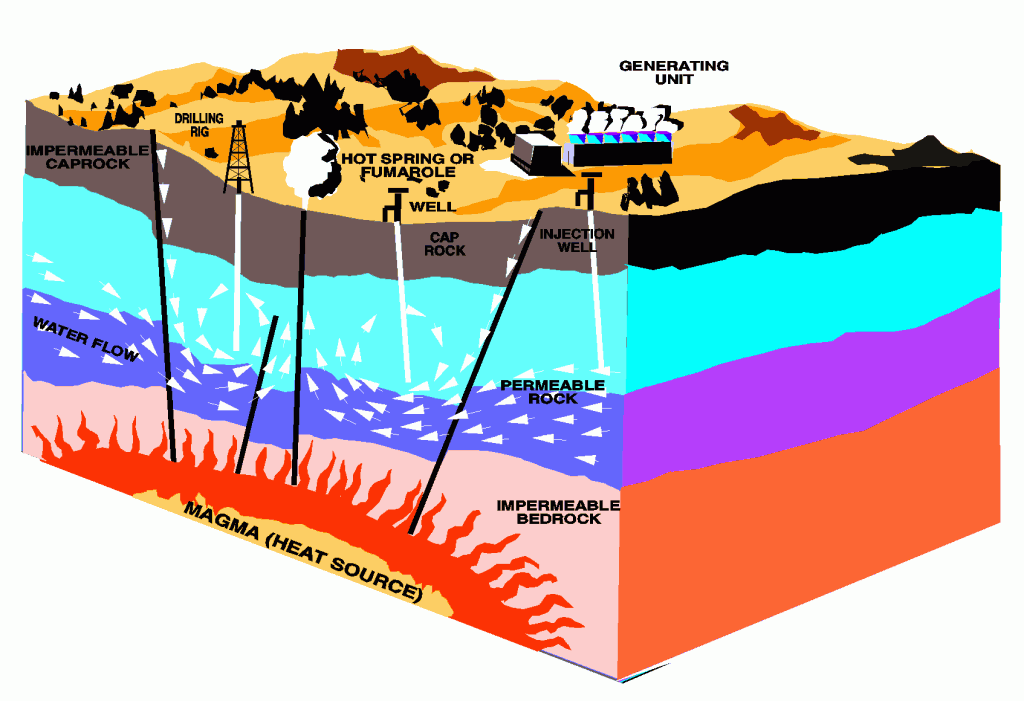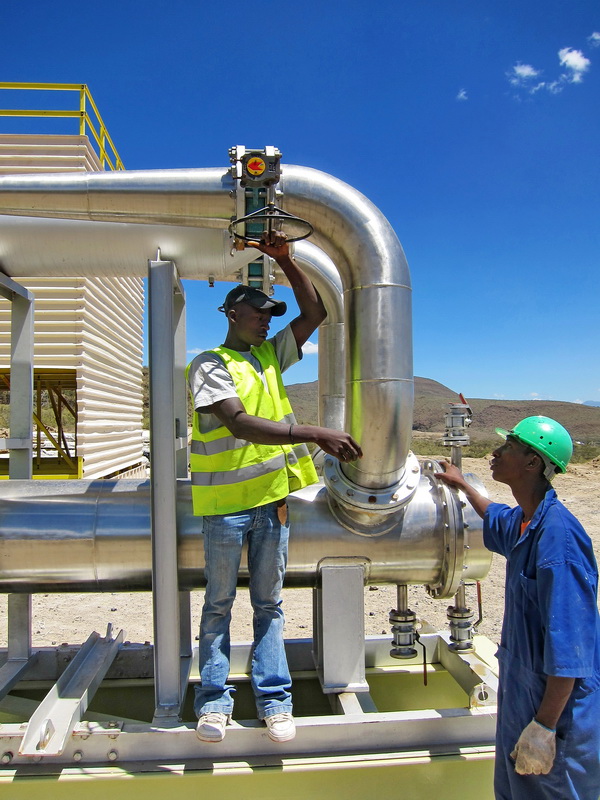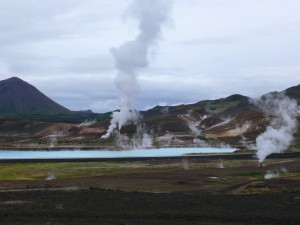SUNDAY, 18 MARCH 2012
What is the solution for nations with increasing energy demands, hindered by frequent power cuts and an inability to compete in the international oil market? For East Africa at least, experts think geothermal energy is the answer. More promising still, the Kenyan government and international investors seem to be listening. This is just in time according to many, as claims of an acute energy crisis are afoot due to high oil prices, population spikes and droughts.Currently over 60% of Kenya’s power comes from hydroelectric sources but these are proving increasingly unreliable as the issue of seasonal variation is intensified by erratic rain patterns. Alternative energy sources are needed; and the leading energy supplier in Kenya, Kenya Electricity Generating Company (KenGen), hopes to expand its geothermal energy supply from 13% to 25 % of its total usage by 2020. The potential of geothermal energy in the region was first realised internationally by the United Nations Development Program, when geologists observed thermal anomalies below the East African Rift system. Locals have been utilising this resource for centuries; using steam vents to create the perfect humidity for greenhouses, or simply to enjoy a swim in the many natural hot lakes.
Along the 6000 km of the rift from the Red Sea to Mozambique, geochemical, geophysical and heat flow measurements were made to identify areas suitable for geothermal wells. One area lies next to the extinct Olkaria volcano, within the Hell’s Gate National Park, and sits over some of the thinnest continental crust on Earth. This is a result of the thinning of the crust by tectonic stretching, causing hotter material below the Earth’s surface to rise, resulting in higher temperatures. This thin crust was ideal for the drilling of geothermal wells, reaching depths of around 3000 m, where temperatures get up to 342°C, far higher than the usual temperature of 90°C at this depth. Water in the surrounding rocks is converted to steam by the heat. The steam can be used to drive turbines and produce electricity. Wells like those in Olkaria operate by pumping cold water down to permeable ‘geothermal reservoir’ rocks, causing steam to rise back up a nearby production well. Care must be taken with the rate at which cold water is added so as to not permanently cool the source rock.
Once wells have been drilled, costs are minimal and greenhouse gas emissions are around 20% of that of fossil fuels. A new scheme aims to minimise what little CO2 emissions there are by extracting the gas from the wells and pumping it into greenhouses to enhance photosynthesis. Along the rift, estimates of potential power range from 7,000-15,000 Megawatts (MW) and the Olkaria area alone is thought to contain 3,500-4,500 MW. With Kenya’s current demand at 1180 MW, the prospects are promising. The Kenyan government has in fact been exploiting Olkaria’s subsurface energy since the 1980s, with a gradually expanding program now including three power plants producing 210 MW.
This may sound too good to be true but, as with all such schemes, there are some drawbacks. The main one is finding a suitable site for drilling, which may take several years of surveying, and even then success is not guaranteed. This point has already been tackled in certain areas of Kenya, but other East African nations are hesitant about investing. The survey needs to reveal that the rock is soft enough to drill through, that there is sufficient heat below and that the surrounding environment is fit for a power plant. The latter point was a contentious issue when it came to Olkaria as the plant is next to a volcano, which is hardly ideal. However, it is a good geothermal site for exactly the same reason. The energy for both the volcano and power comes from a thermal anomaly, so there is a complicated balance of factors to decide if the environment is stable enough to be utilised. Lastly there is a need to consider harmful gases coming up from deep within the Earth. These can quite easily be captured, like the CO2 mentioned before, but disposing of them can be more problematic.
Despite having to overcome environmental issues there is clearly room for further geothermal expansion in Kenya and the surrounding nations. The Philippines began geothermal development at a similar time and now are second only to the United States in producing geothermic energy. Of course it is not quite this simple. Undoubtedly, if all Western countries resided over such resources they would be more widely used already. However East African nations are held back by two key factors; education and funding. With the current plan though, this is all set to change.
On the educational front, the United Nations University Geothermal Training Program (unugtp.is) offers a six-month intensive course for candidates from developing countries. It aims to create groups of specialists in countries with geothermal potential. The course is held in Iceland where geothermal power fulfils 25% of the country’s total energy requirements.
Meeting financial requirements has been more difficult. Eric Kaleja, employee of the German Development Agency (DEG) in Kenya says, ‘when it comes to funding infrastructure in particular, such as in the energy sector, you really need long term financing. These loans run for 10-15 years and local banks do not have the capacity for such funds.’ The Olkaria III plant was highly dependent on international funding, with the DEG investing $40 million and European development banks the rest. Thanks to this funding the plant, originally opened in 2000, has expanded to operate at 48 MW. Early in 2010, Ormat Technology, which runs the plant, put forward its plans to expand the facility to 100 MW by 2016.
Of course, the renewable energy market’s main competitors, the oil and gas industries, are causing some problems. Primarily they hinder the rate of development by their substantial demand for rigs. The US alone is expected to increase its demand by 150% by 2013. On the other hand high oil prices are forcing East African governments to look increasingly to renewable sources, which in the long run seem far more beneficial. Geothermal energy looks to be the most economical source, as well as the most likely to attract foreign investment and expertise. However, East African nations are still struggling to prove to investors that they are fully stable nations. They have had some success with recent investment from The Export-Import Bank of China and French Development Agency giving a total loan of $163 million to the Kenyan government in order to buy five more geothermal rigs to aid its 2020 goals.
At a 2011 Cambridge event, ‘The Benefits of Ethical Investment’, large insurance and investment companies such as Aviva and Henderson outlined the advantages of investing in such sustainable industries. Eritrea, Ethiopia, Djibouti, Uganda and Zambia all have the potential to tap in to this geothermal resource. If this opinion is accepted by the investment community, perhaps these countries too can hope to receive the financial injection that is revolutionising Kenya’s energy industry.
Tom Bishop is the Managing Editor of BlueSci and a 4th year undergraduate in the Department of Earth Sciences.



